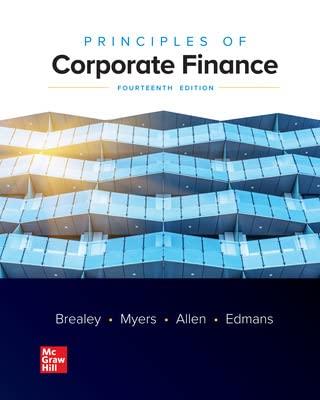21. Economic rents (S11.3) The manufacture of polysyllabic acid is a competitive industry. Most plants have an
Question:
21. Economic rents (S11.3) The manufacture of polysyllabic acid is a competitive industry. Most plants have an annual output of 100,000 tons. Operating costs are $0.90 a ton, and the sales price is $1 a ton. A 100,000-ton plant costs $100,000 and has an indefinite life. Its current scrap value of $60,000 is expected to decline to $57,900 over the next two years.
Phlogiston Inc. proposes to invest $100,000 in a plant that employs a new low-cost process to manufacture polysyllabic acid. The plant has the same capacity as existing units, but operating costs are $0.85 a ton. Phlogiston estimates that it has two years’ lead over each of its rivals in use of the process but is unable to build any more plants itself before year 2. Also it believes that demand over the next two years is likely to be sluggish and that its new plant will therefore cause temporary overcapacity.
You can assume that there are no taxes and that the cost of capital is 10%.
324 Part Three Best Practices in Capital Budgeting
a. By the end of year 2, the prospective increase in acid demand will require the construction of several new plants using the Phlogiston process. What is the likely NPV of such plants?
b. What does that imply for the price of polysyllabic acid in year 3 and beyond?
c. Would you expect existing plant to be scrapped in year 2? How would your answer differ if scrap value were $40,000 or $80,000?
d. The acid plants of United Alchemists Inc. have been fully depreciated. Can it operate them profitably after year 2?
e. Acidosis Inc. purchased a new plant last year for $100,000 and is writing it down by
$10,000 a year. Should it scrap this plant in year 2?
f. What would be the NPV of Phlogiston’s venture?
Step by Step Answer:

Principles Of Corporate Finance
ISBN: 9781264080946
14th Edition
Authors: Richard Brealey, Stewart Myers, Franklin Allen, Alex Edmans





